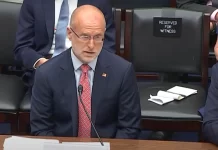
Reformed Arizona, Michigan pensions are paying down debt faster after several straight years of continuous reform efforts, says Reason Foundation’s Pension Integrity Project.
After several straight years of continuous reform efforts across multiple pension systems in both Arizona and Michigan, lawmakers are making significant contributions to these pension funds to support the long-term security and affordability of the retirement benefits promised to teachers, first responders, and other public workers.
Through legislation and supplementary contributions over the past two years, state and local employers in Arizona dedicated an extra $2.67 billion in supplemental contributions to reduce the significant unfunded pension liabilities within state pension systems.
Similarly, Michigan policymakers have provided around $2.5 billion in relief payments for several of their underfunded pension plans in the recently enacted 2022 budget.
These major payments mark a dedication to fulfilling promised retirement benefits, and they signal to taxpayers and public workers that these states are confident in the risk-reducing reforms enacted in recent years.
Arizona
Arizona lawmakers took their first meaningful leap into pension reform in 2016 by enacting major changes to the pension system for public safety workers. The bipartisan reform established a new risk-managed tier of benefits for new workers and more stable inflation protection for retirees. This comprehensive approach reduced the chances of the state facing unpredictable costs on promised benefits for incoming police and firefighters. In 2017, a parallel reform accomplished the same for the state’s corrections officer pension system.
Now, with several years of results demonstrating the improved outlook of these systems, lawmakers are taking the next crucial step by making significant payments into the retirement funds to accelerate the paydown of unfunded obligations. Governor Doug Ducey’s 2021 state budget included $1 billion in extra appropriations dedicated to the public safety and corrections officer plans as part of a budget focused on tax cuts and debt reduction. Additional contributions totaling $500 million from local and state employers were also included.
In 2022, three separate pieces of legislation passed in the Arizona Legislature and were signed into law by Gov. Ducey, instantly eliminating another $1.17 billion in unfunded pension liabilities for the state’s public safety systems. House Bill 2862 made a supplemental payment of $1.07 billion, Senate Bill 1086 secured $40.8 million, and Senate Bill 1002 added another $60 million to be applied to unfunded pension liability.
These significant payments reinforce the state’s commitment to the retirement promises made to public safety workers while reducing long-term costs to future taxpayers. Much like any other debt, paying down Arizona’s unfunded pension obligations faster will save tremendous amounts down the road. For some perspective on how much savings will be generated from these supplemental payments, the Pension Integrity Project estimated a $1 billion payment would save the state as much as $564 million over the next 30 years.
Michigan
Michigan’s pension systems have gone through numerous reforms over the past 25 years and it was the first state to institute a defined contribution plan for its public workers in 1997. After the Great Recession, the state reformed its underfunded public school and state police employee plans, ultimately passing a series of bills that have put the state’s pension funding outlook on solid ground. Most notably, a 2017 reform of the public school pension system established a hybrid plan for all new members that balances risks and costs equally between employees and the state, slowing the growth of runaway debts and costs.
The 2022 Michigan legislative session included a wave of supplemental pension payments in its final 2022-23 budget (HB 5783), totaling around $2.5 billion, into three of its underfunded pension systems. Just over $1.7 billion of those funds were allocated to the public school employees’ pension system (MPSERS). The seven university employers in MPSERS received $300 million to pay down their unfunded liabilities, $425 million was allocated to the broader MPSERS plan to offset the costs associated with reducing the plan’s payroll growth assumption to 0%, and $1 billion was earmarked for distribution into the plan’s asset pool. Of note is that this payment is not to be used for any debt or normal cost payments.
The municipal employee’s retirement system was also given $750 million to start a grant program that will award dollars to qualified local governments, with the goal of reaching a 60% funded ratio. $170 million of those funds, the largest individual chunk for any one governmental unit, will make its way to Flint where the city’s pension system is facing over $400 million in unfunded liabilities. The third system receiving funds is the state police pension system, which will have the plan’s entire unfunded liability paid off through a $100 million supplemental payment.
Arizona and Michigan’s recent treatment of funding for pension systems is an example of the value of comprehensive pension reform. Other state and local governments should note their success in tackling the challenge of reducing pension debt. The clearest lesson to be learned from these successes is that when real risk-reducing reform is adopted, it makes it much easier for policymakers to work and reduce unfunded obligations. If lawmakers see that a plan has addressed the problems that created the funding shortfall, it can alleviate their reluctance to dedicate the necessary share of the budget to resolve the legacy costs of those problems.
Originally published by Reason Foundation. Republished with permission. For more Budget & Tax News.









